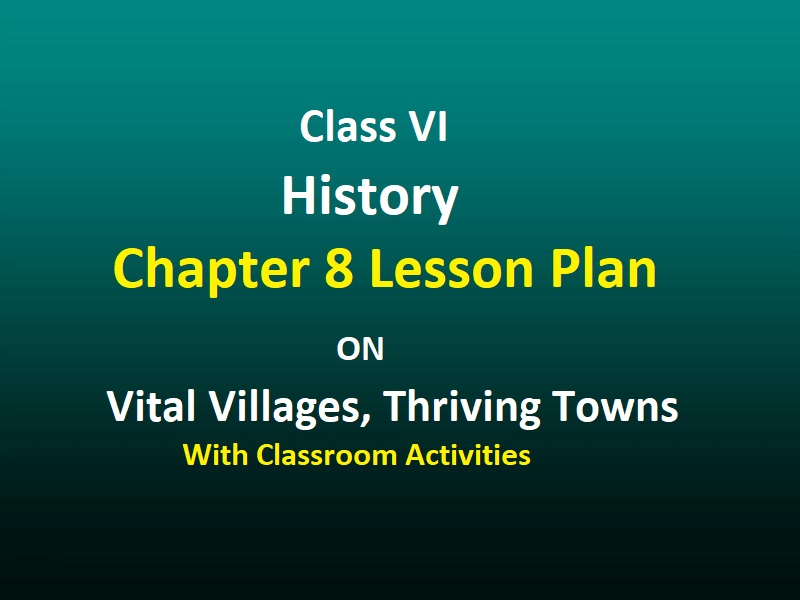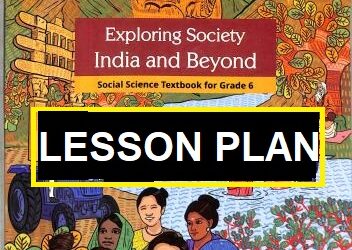Class VI History Chapter 8 Lesson Plan
History class VI Chapter 8 Lesson plan is an activity that a teacher has to perform before the actual teaching takes place. It is the road map for any teacher. Moreover, effective lesson planning provides the students with the necessary structure and direction. It also takes care of the diverse needs of our students. Class VI History Chapter 8 Lesson plan provides better resources that are integral to students. This lesson plan of class VI is full of classroom activities that children will enjoy doing. It will also allow teachers to critically reflect on and improve our teaching and learning practice. It ensures every minute of class time in teaching new concepts. Class VI History Chapter 8 lesson plan will help you to reach every child with a clear plan in mind.
Class VI History Chapter 8 Lesson Plan
General Objective:
Firstly, to develop students’ interest in the subject.
Secondly, to understand society and its place within it.
Thirdly, developing scientific temperament among the students.
Fourthly, to develop skills of inquiry, investigation, and analysis.
Finally, to enhance students’ learning ability.
Specific Objective:
- Students will know about the Vital Villages
- They will also learn about the Thriving Towns
Checking Previous Knowledge:
At first, the teacher checks the previous knowledge of the students by asking a few questions.
Do you know how the tools, art and craft, and small industries were developing in the villages?
Introducing Topic: storytelling method
At first, the teacher describes an Indian village. Also tells about the life of people in villages.
Teaching aids:
Text Book, Black Board, You tube videos, Images, and PPT
Technique:
To begin with, the teacher starts the Interactive session with common examples.
However, the teacher uses various methods to make the topic interesting by interacting with the children in the class.
By asking very simple questions, the teacher draws the attention of the class.
Also, make sure that the children are involved in the discussion.
Finally, While interacting with the students, the teacher also tells about poor farmers and rich landlords.
Content/ Teaching Points:
- Looking ahead
- Iron tools and agriculture
- Other steps to increase production.
- Who lived in the villages.
- Finding out about the cities.
- Coins: marked coins.
- Cities with many functions.
Class VI History Chapter 8 Lesson Plan
First Activity:
Open Book Assessment
The teacher conducts an open-book test.
To begin with, she Prepares 10 short questions (worksheet) from the chapter.
However, Students are asked to find out the answers from the textbook and write in their copy.
Time: 30 minutes.
Second Activity:
Description:
Firstly, the teacher divides the class into four groups.
Thereafter, each group is given a topic from the chapter, such as
i) Iron tools and agriculture
ii) Other steps to increase production.
iii) Who lived in the villages.
iv) Compare a village and a city.
Group members have to read the topic from the book and provide information based on the given topic.
They will be given 20 minutes time to collect information and 3 minutes time to present.
Finally, their observations will be displayed on the class board for two days.
Learning Objective:
By the end of the activity, students will be able to:
- describe the Iron tools and agriculture
- and explain other steps to increase production.
- provide detailed information about Who lived in the villages.
- will be able to Compare a village and a city.
Assessment Criteria:
Indicators
- Relevance of Content
- Presentation of information gathered
- Awareness of the information gathered
- Creativeness
- Analytical Skills
Classwork:
i) First, Objective and short answer-type questions will be done.
ii) Finally, Long answer type questions will be discussed and done in the class.
Homework:
Draw the different types of coins.
Values imparted:
Firstly, the Social responsibility for growing food for all by using different agricultural methods.
Secondly, Sensitization towards the advantage of a planned town and neat & clean villages.
Multidisciplinary Integrated learning:
- Art: Draw Indian coins of the value of 1, 3, 5, 10, 20, 25, and 50 paise.
- English: T.V. reporting from a village describing the life of people.
- Hindi: write the meaning in Hindi – Vellalar,Uzhavar, Kadaisiyar and adimai, Gram Bhojaka, slaves.
- Teachers can use Edu-puzzle and Gamification websites to make their class live and interesting.
Assessment Criteria:
Indicators
- Relevance of Content
- Presentation of information gathered
- Awareness of the information gathered
- Creativeness
- Analytical Skills
Learning Outcome:
By the end of the activity, students will be able to:
- describe the Iron tools and agriculture
- and explain other steps to increase production.
- provide detailed information about Who lived in the villages.
- will be able to Compare a village and a city.
Remedial Measure:
Each One Teach One
Children sitting on the left side of the row will explain the chapter to the children sitting on their right.
Class VI History Chapter 8 Lesson Plan
CONCLUSION:
I hope the class VI Social Science Lesson Plan will be of great help to the new teachers.
At last, I request you to comment, subscribe and send me your feedback.
So that, you get the notification of the next lesson plan.
Class VI History Chapter 7 Lesson Plan: Ashoka, The Emperor Who Gave Up War
Class VI Civics Chapter 6 Lesson Plan As Per Bloom’s Taxonomy
Was this lesson plan helpful to you? Feel free to write your views so that we can provide useful content for the teachers.





Very nice & so useful this lesson plan…
Thanks Aparna. Kindly share it with your friends and needy ones.